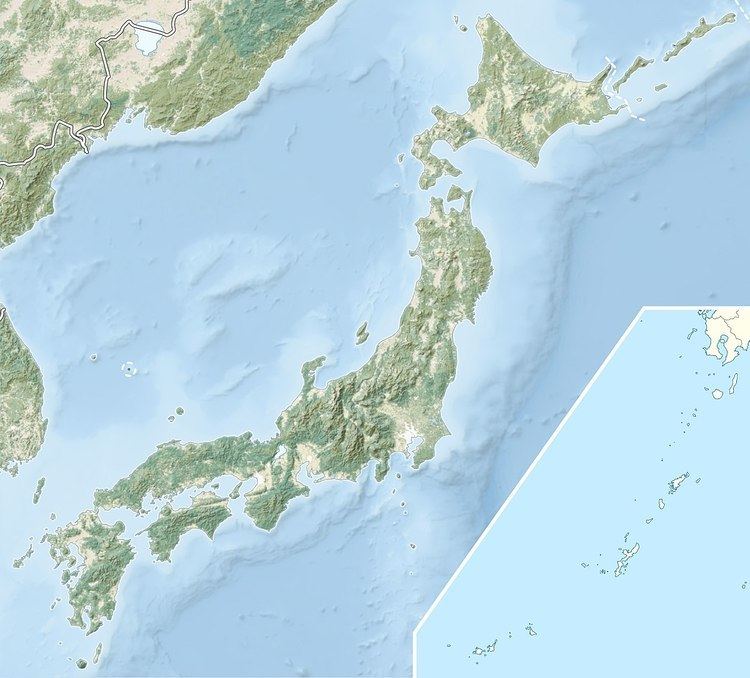Active 1888–1945 | ||
 | ||
Garrison/HQ Asahikawa, Hokkaido, Japan Nickname(s) Bear Division (熊兵団, Kuma-heidan) | ||
7th Division (第7師団, Dai-nana Shidan) was an infantry division in the Imperial Japanese Army. Its call-sign was the Bear Division (熊兵団, Kuma-heidan).
Contents
The 7th Division was formed in Sapporo, Hokkaidō on 12 May 1888, as the first new infantry division to be created after the reorganization of the Imperial Japanese Army away from six regional commands and into a divisional command structure. The reorganization was recommended by Prussian military advisor Jakob Meckel. It was responsible for the defence of Hokkaidō, which it divided into four operational areas (Sapporo, Hakodate, Asahikawa and Kushiro). As one of the projects of the Japanese government was to encourage the settlement of Hokkaidō by ex-soldiers, the 7th Division was over-strength, and contained many soldiers originally from other areas of Japan. The territorial division was converted to field infantry division 12 May 1896, in the aftermath of the First Sino-Japanese War. 30 October 1901, most of division units were transferred to Takasu village in Kamikawa (Ishikari) District, Hokkaido, where previously only 28th infantry regiment was located. After extensive building project, the division moved to new Takasu headquarters 21 October 1902, and 25 October 1902 the Sapporo Military prison was moved to the same location.
Russo-Japanese War to Soviet–Japanese border conflicts
The 7th Division saw combat during the Russo-Japanese War, where it was assigned to the Siege of Port Arthur, and later to the Battle of Mukden. Assigned to Manchuria from 1917-1919, it also participated in the Siberian Intervention from 6 June 1918. The division has returned to Asahikawa, Hokkaido 5 May 1919.
It was reassigned to Manchuria twice in 1934 and 1936, performing police duties without significant events. In February 1938, the 7th division was permanently assigned to Kwantung Army, but arrived too late to participate in the Battle of Lake Khasan in July 1938. Parts of division were reinforcing 23rd division during the disastrous Battles of Khalkhin Gol in 1939. By the September 1939, the entire division have arrived to front lines, with 26th infantry regiment in particular noted for finally stopping a Soviet advance. Because the Hokkaido was left mostly undefended, the 7th division has returned to Asahikawa, Hokkaido in August 1940, being subordinated directly to Imperial General Headquarters as part of the strategic reserve. Also in 1940, the 25th infantry regiment was transferred to Sakhalin mixed brigade, which become 88th division in February 1945. As result, the 7th division has become the triangular division.
Pacific War
In 1942, despite its specialization in Arctic warfare, the 28th Infantry Regiment of the 7th Division, under the command of Kiyonao Ichiki was assigned to occupy Midway in the central Pacific. After the Japanese defeat at the Battle of Midway, which caused the cancellation of the invasion of Midway, the regiment was on its way back to Japan when it was rerouted to Guadalcanal in the Solomon Islands in August 1942. Also, a detachment of 7th division have formed a garrison for Japanese occupation of Attu. At Guadalcanal, the regiment took heavy casualties during the Battle of the Tenaru and the Battle of Edson's Ridge. Of the 2500 men who were sent to the Guadalcanal campaign, only 140 returned alive to Japan.
The remainder of the Division remained as the Asahikawa, Hokkaido garrison until March, 1944. At that moment it was moved to the Eastern Hokkaido to Obihiro, with 77th division taking the duty of Asahikawa defence. The infantry regiments have fortified around Nakashibetsu, Hokkaido, building a network of pillboxes stretching from Nemuro to Kushiro. The division was disbanded with the surrender of Japan in September 1945.
